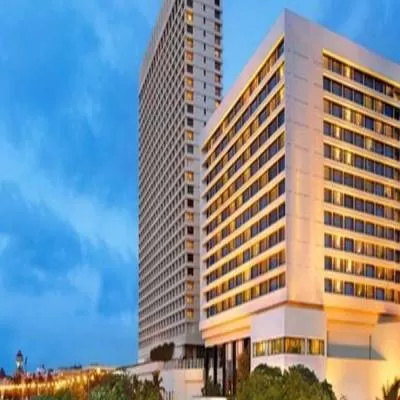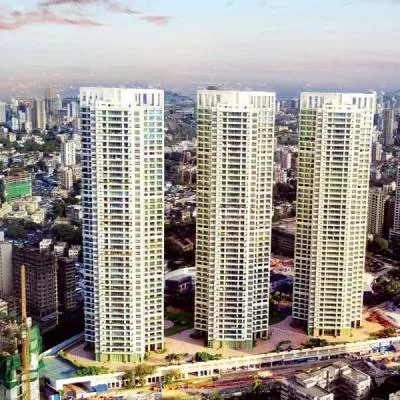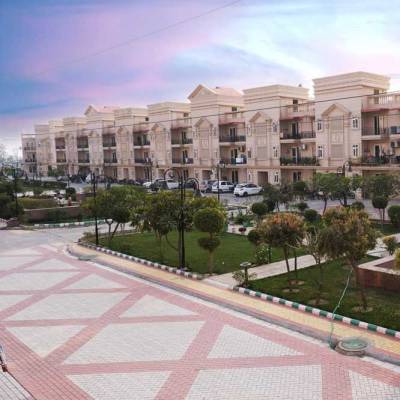- Home
- Infrastructure Transport
- PORTS & SHIPPING
- Housing market shows resilience, office segment on strong footing
Housing market shows resilience, office segment on strong footing
Annual sales have exceeded the annual launches for the first time since 2016, indicating further stability in the residential market, according to the latest JLL Report, India Market Update 2019, released today. Witnessing a drop of 14 per cent in unit launches, the year 2019 saw a substantial decrease to 136,998 when compared to 159,452 units launched in 2018. On the sales front, the year saw an increase of 6 per cent with 143,923 units sold in 2019 as compared to 136,273 units in 2018. The report added, a weak last quarter that witnessed new launches of 26,405 units, a decrease of 31 per cent when compared to Q4 2018, contributed majorly to the decline in new launches. Mumbai remained the only city in the country that saw a hike in launches. All other cities witnessed a drop in launches in 2019 in comparison to 2018. The affordable and mid-income housing segments (ticket size of up to Rs 10 million in Mumbai and Rs 7.5 million across other cities) still form the majority of the launches and supply. However, the collective share of the two segments has also dropped to 55 per cent in 2019 as compared to 66 per cent in 2018, the report added. Pune tops the list, with 84 per cent of the new supply falling in the affordable and mid-income category. The launches in these segments were mostly concentrated in the peripheral areas of the cities, which have the availability of larger land parcels at comparatively lower costs. The drop can be attributed to the fact that there is already an existing substantial number of under-construction units in these segments. Interestingly, larger markets such as Mumbai, Bengaluru and Delhi NCR witnessed more launches in these ticket-sizes as compared to markets like Hyderabad and Kolkata. Residential sales continue to rise On the sales front, the report added, while the first half of 2019 witnessed a substantial jump in sales of 22 per cent on a y-o-y basis, the second half of the year recorded a 9 per cent dip in the offtake of units. The prolonged economic slowdown led by weak consumer demand has been manifesting itself in the form of sluggish sales with buyers postponing their purchase decisions. While the three key markets of Mumbai, Bengaluru and Delhi NCR continued to account for a major chunk of the total sales, the number of sold units in Hyderabad increased by 21 per cent y-o-y in 2019. In the last quarter (October to December) of 2019, Mumbai has so far defied market trends and has been the only city to register a sales growth when compared to Q4 2018. Ramesh Nair, CEO & Country Head – India, JLL, said, “The residential market has seen a gradual shift in consumer behaviour. Homebuyers are now looking at mostly ready-to-move-in apartments or under-construction properties by developers who have good track records pertaining to completion of projects. Recent reforms and developers’ focus on the delivery of projects will lead to more supply in 2020 and the revival of buyers’ sentiments. We believe sales will continue to rise in future and are likely to increase beyond the pre-demonetization year of 2016. The revival signs of the residential segment will be more visible through affordable housing demand which will drive long term institutional funds to invest in this segment.” The surge in sales will primarily hinge on enhanced consumer confidence, which in turn depends upon the effective implementation of progressive government policies and economic growth registering a comeback. A bullish office market India office market has set a new benchmark and recorded a historic high, both in net absorption and new completions. While 46.5 million sq ft of space got absorbed nearly 52-mn sq ft of Grade A office space was completed in 2019, according to the report. The trend is phenomenal as the last such spike in net absorption was witnessed in the year 2011. The market reported a net absorption of 37 mn sq ft in 2011.. Bengaluru, Delhi NCR and Hyderabad accounted for nearly 70 per cent of the net absorption in 2019. As against this, Mumbai witnessed a marginal drop of 2 per cent y-o-y in net absorption on the back of limited relevant supply despite strong latent demand from large occupiers, the report added. Competing with bigger markets, Hyderabad recorded a net absorption of 10.5 mn sq ft in 2019. With the net absorption of more than 5 mn sq ft in the last quarter (October-December), the Delhi-NCR market too achieved a new yardstick of around 11 mn sq ft in 2019. The country also witnessed stronger new completion during the year 2019. Registering a growth of 45 per cent, y-o-y, 51.6 mn sq ft of new office space was added to the stock in 2019. In line with net absorption, Bengaluru, Delhi NCR and Hyderabad together accounted for nearly 80 per cent of the new completions in 2019. Each of these three cities witnessed more than 13 mn sq ft of new completions, with Bengaluru leading the pack at 13.9 mn sq ft. “Establishment of REIT will lead to developers thinking more long-term and building better quality assets. With almost all top 10 office developers having institutional partners, we expect a further flight to quality, enhanced technical upgrades of existing portfolio, smart buildings, more focus on wellness and human experience. Future demand is expected to come from the datacentre industry as well. Occupiers will continue their focus on cost, talent, agility, compliance and productivity,” added Nair. The momentum in new completions is expected to continue in 2020, hovering at the 50-mn sq ft mark. Hyderabad will continue its rise in the office market with more than 13 mn sq ft of office space expected to be completed in the next year.
























